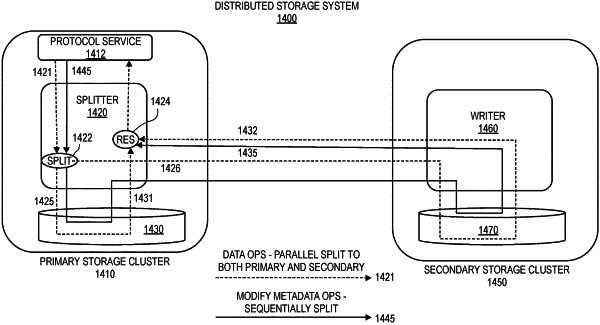| CPC G06F 3/065 (2013.01) [G06F 3/0613 (2013.01); G06F 3/0619 (2013.01); G06F 3/0631 (2013.01); G06F 3/0653 (2013.01); G06F 3/0659 (2013.01); G06F 3/067 (2013.01)] | 20 Claims |

|
1. A computer implemented method performed by one or more processing resources of a distributed storage system, the method comprising:
maintaining state information regarding a data replication status for a first storage object of a primary storage cluster with the first storage object being replicated to a second storage object of a secondary storage cluster, wherein the state information facilitates automatic triggering of resynchronization for data replication between the first storage object and the second storage object;
performing persistent inflight tracking of operations (Ops) having a parallel simultaneous dispatching of Ops to a file system of the primary storage cluster and a file system of the secondary storage cluster with a first Op log of the primary storage cluster and a second Op log of the secondary storage cluster;
establishing Op ranges for the first and second Op logs;
comparing the Op range of the first Op log of the primary storage cluster and the Op range of the second Op log of the secondary storage cluster; and
determining a relation between the Op range of the first Op log and the Op range of the second Op log including one of a same range relation, a subset relation, an overlap relation, and a disjoint relation to prevent divergence of Ops in the first and second Op logs and to support the parallel split of the Ops.
|